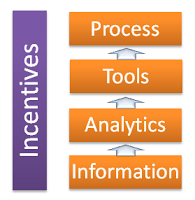In the wake of major disasters and crises, many supply chain, procurement and finance executives think about things they can do to be better prepared and more resilient before the next big crisis comes their way. As a result, risk assessments, quantifications, and supplier evaluations are often conducted as limited duration, project-based, response-level measures. However, supply chain resiliency is not a limited duration, project-based exercise. It is a strategic long term priority and requires commitment from the very top level of an organization, down to individual contributors with key roles throughout the company.
As any supply chain or procurement practitioner will agree, we are in a fast paced, risky, and highly dynamic global supply chain environment. Short lifecycles, rapid innovation cycles and product proliferation mean that any project-based risk management effort can be outdated from the day it is kicked off. Let’s say you create a simulation model and populate it with data about components, suppliers, product revenues, and global dependencies. The chances are that within the 6 months it takes to get the model built, populated, functional, and able to provide insightful results, the reality on the ground has already shifted. To add to the complexity, suppliers themselves can change their parts/raw materials and manufacturing locations without due notice.
Fostering a Culture of Resiliency in your Enterprise
Supply chain resiliency is a journey that starts with a commitment at the highest level and trickles down the layers of the organization over time. To be successful, the resiliency focus must permeate throughout the culture of an enterprise.
The resiliency culture of an enterprise is influenced over time by stacking 5 elements: information, analytics, tools, processes, and incentives. Incentives tied to critical processes keep these elements in motion. Building on a foundation of supply chain visibility information enables an organization to develop a set of analytics that help to quantify risks and expose critical vulnerabilities in the supply chain. Analytics for resiliency are primarily centered on revenue impact and risk scores. These two key metrics provide the best way to expose weakest links in an organization’s supply chain, revealing deeper insights into strategic vulnerabilities hidden throughout the supply chain.

For a resilient enterprise culture, information serves as a solid foundation for supplier visibility, feeding into an analytics platform grounded in revenue impact and risk scores. A tool can then bring the analytics together and deliver meaningful insights at people’s fingertips – a complete resiliency-related decision support system that gleans key insights quickly and enables risk optimized decisions. Processes are put in place to track risk mitigation and resiliency related progress over time, topped with incentives to ensure that processes are followed and rewards are in place to recognize achievement.
The process and incentives discussion itself is a lengthy topic. But in my opinion, these five ingredients together determine culture, and a resilient culture cannot be attained overnight or within 6 months. In order for an organization to be resilient from the inside-out, a multi-year commitment at the top level is imperative. CXO level briefings on risk management, centralized strategy development tied to incentive programs for resilient choices, and rewards tied to successful risk mitigation help an organization shift from being an ad hoc decision making body to one where risk information is readily available and people are willing to consider risk as a key input into their sourcing, manufacturing, inventory, offshoring, outsourcing, and make vs. buy decisions.
Reward and Incentivize Resilient Choices
When an enterprise averts a disruption that hits its competition, the good news is usually attributed to luck. However, I say that it should be attributed to a resilient choice someone made at some point. Think about it – you held more inventory, you second sourced that high-risk part, you spent more money near shoring or gave up some cost savings in exchange for redundancy! Consider analyzing why you weren’t disrupted and make a reward program for the team involved – a sure way to capture people’s interest in making more resilient choices. Usually, we reward the person who saved the day buying up inventory at 300% premium and expedited freight to get product out to customers – all at the expense of profitability. I’m not saying we shouldn’t take these types of recovery measures, but that we stop rewarding the last minute diving catches, and instead reward proactive resilient choices.
Ultimately, we take the risks that are essential to our businesses. However, with the above approach, we can take those risks intelligently without completely crippling our resiliency. We can strategically invest in protecting those critical, fundamentally exposed areas of the business so that when the next crisis approaches, we are better equipped, better prepared, and able to respond faster or avert disruption altogether.
Bindiya Vakil is CEO and founder of Resilinc and is a recognized thought leader in the area of supply chain risk management. She has been a practitioner in high-tech supply chain management with companies including Flextronics, Cisco and Broadcom. Ms. Vakil has a master’s degree in supply chain management from MIT and an MBA in Finance. She is a published author and frequent speaker at top supply chain conferences and universities on the topic of supply chain resiliency. Ms. Vakil’s concept of “Design for Resiliency” is being widely adopted as a best practice in the industry.
Click here to read more in her ongoing blog post series.




